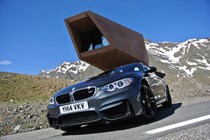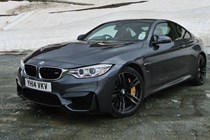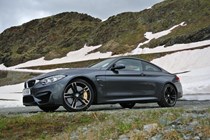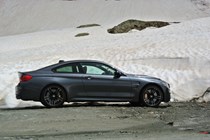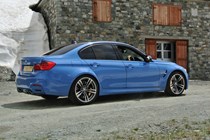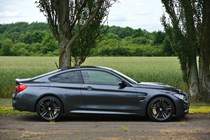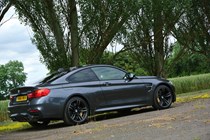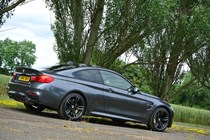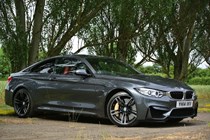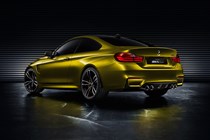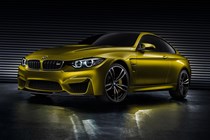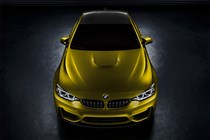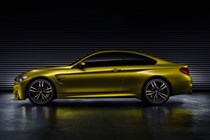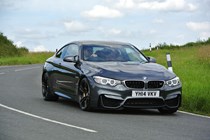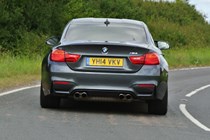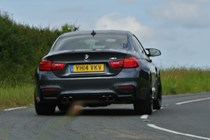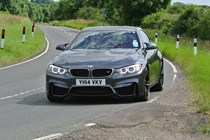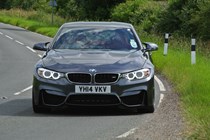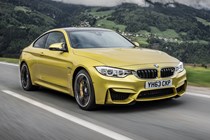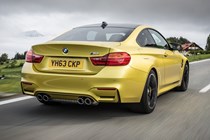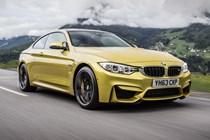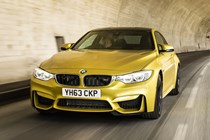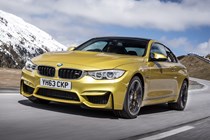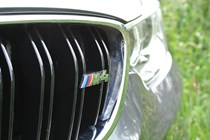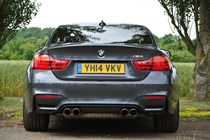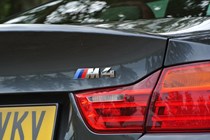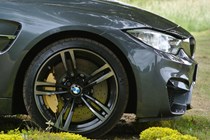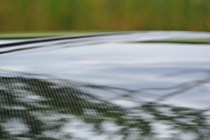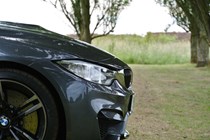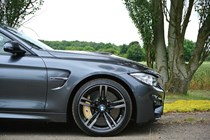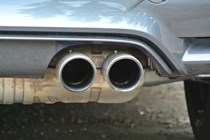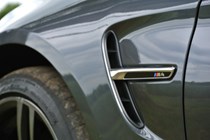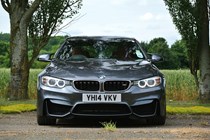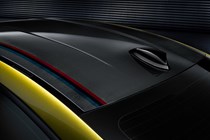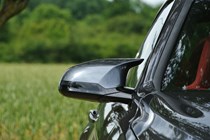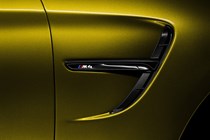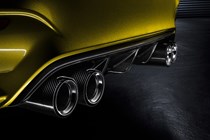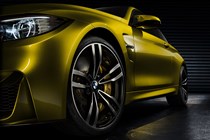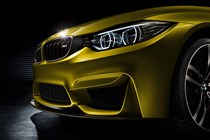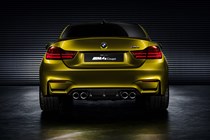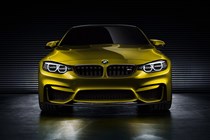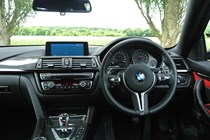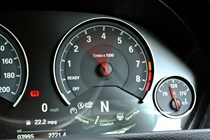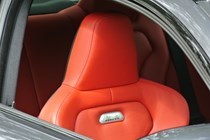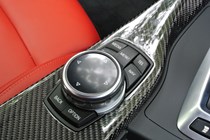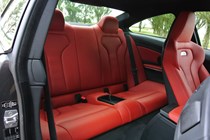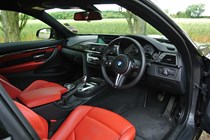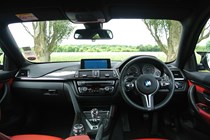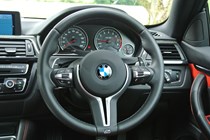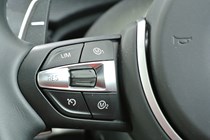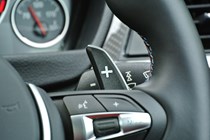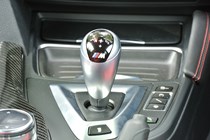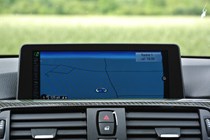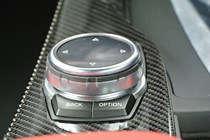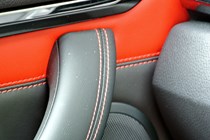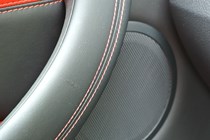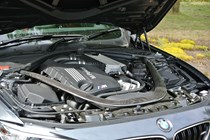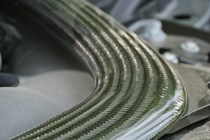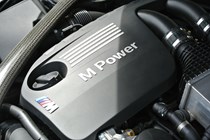
BMW 4-Series M4 (2014-2019) engines, drive and performance
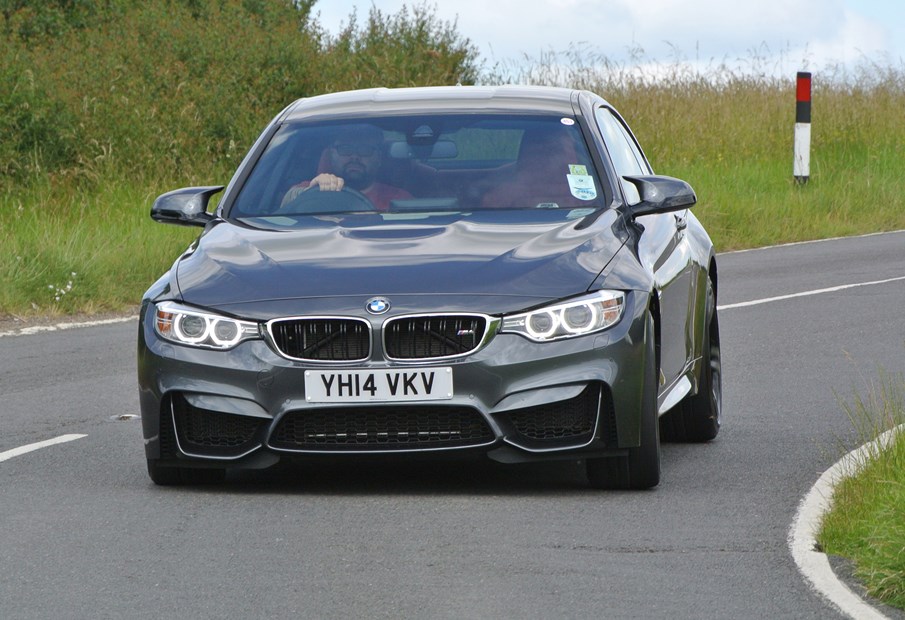
For once the figures aren’t lying, and BMW M4 performance is simply ballistic. The firm claims the car can sprint from 0-62mph in just 4.1 seconds (4.3 for manual gearboxes), and provided you can get the traction that’s a figure we can well believe. Despite the official 155mph limited top speed we experienced an indicated 170mph on a section of derestricted autobahn too.
In short the M4 offers performance unlike any rival. It’s faster than the outgoing M3 too, helped in part by a 30 percent increase in torque over the old naturally-aspirated V8-engined car.
It’s the way this twin-turbocharged straight six-cylinder engine delivers its power that impresses the most though. A short inlet tract for the two turbochargers (which are both the same size but now weigh just 100g more than BMW’s previous single turbo installations) and effective air-to-air and air-to-water cooling for the charge air mean torque is instantly available. In fact you’ll only need 1,850rpm to find 550Nm at your disposal.
That’s available all the way to 5,500rpm too, so there’s no let-up in the way the BMW increases its speed, only pausing for the briefest of gearshifts as the speedo needle swings violently clockwise and the numbers get higher. Certainly in the mid-range, and for overtaking especially, the M4 is devastatingly quick to accelerate.
It enjoys being worked hard too, the exhaust note (and the sound piped into the car) changing quite dramatically around 4,000rpm, with an appetite for the red line not often becoming of turbocharged cars. Though at lower speeds and wide open throttle there is an engaging and addictive set of sounds from the turbochargers passing through the bulkhead as well.
So far we’ve only tried the seven-speed M-DCT dual clutch automatic gearbox, which is clearly excellent – in its slowest mode it’ll swap cogs with surprising efficiency and refinement (even if it’s not quite as smooth as a traditional automatic gearbox) but ramped up it’ll hammer shifts home with a proper thump. It certainly adds to the drama, and under full throttle there’s a slight kick from the back as power is re-instated to the rear wheels when a ratio has been selected.
In fact at regular road pace it works best in its middle mode, which offers the best compromise of all and still feels brisk in its changes. Those wanting to take advantage of the ratios on offer can do so with the steering wheel mounted shift-paddles, which feel pleasingly damped rather than simply switch-like.
This BMW M4 is actually 83kg lighter than its predecessor (the M3 Coupe), and with a manual gearbox dips under 1,500Kg, which is a startling feat – it’s also around 200kg lighter than a Mercedes C63 AMG Coupe or Audi RS5. It’s all down to material and construction choice of course, with a roof, boot lid and even the main driveshaft made out of carbon fibre as well as bonnet and wings made from aluminium. The front seats are 6kg lighter than before, the 19-inch forged alloy wheels save another 3kg and the electric power steering reduces weight by the same.
What this means is the BMW M4 exhibits some truly impressive handling traits, with agility and nimbleness that belies its size and comfort. Turn in is sharp, and though understeer is present if pushing on too fast in tighter turns, with the stability systems turned off it’s easily dialled out with an application of accelerator.
In fact the M4 is incredibly well balanced, and those looking to play with the car’s trajectory can do so easily with very little steering input – unless you tread too far on the right pedal, at which point you’ll need quick hands and plenty of opposite lock on the thick-rimmed wheel to gather it up.
Of course you can leave the stability systems switched on, at which point it won’t let the car get out of shape at all. It can be a frustrating experience though, with the orange traction control light flickering away seemingly endlessly on anything but the grippiest or smoothest of roads as the car cuts its power.
A far better compromise is the half-way house MDM setting, which allows a certain amount of slip angle before reducing power and regaining control of your wayward M4. It’s the ultimate in driver flattery, sure to impress friends and bystanders who will think you’re controlling it all yourself.
In Comfort mode there is minimal body roll to be experienced, but selecting Sport or Sport + soon changes that and ties the M4’s body down a little tighter – the latter feeling almost completely flat through the bends. Selecting the same for the steering adds extra weight, but no appreciable increase in feel and in truth you’re best to leave this element in Comfort mode however.



